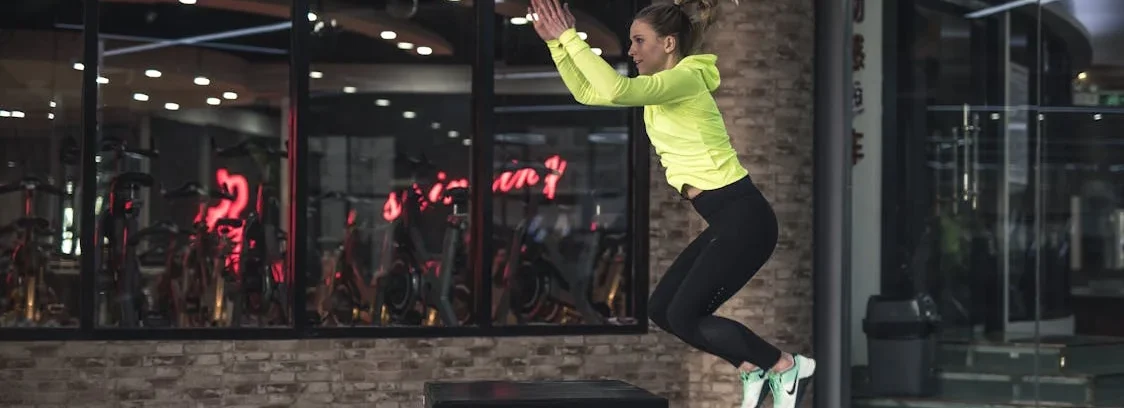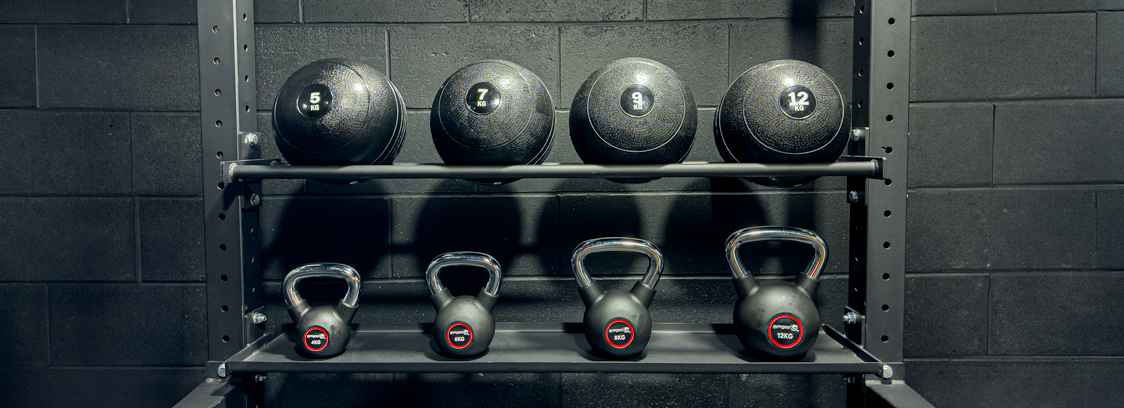
Holly has worked in the fitness industry for 13 years and holds a degree in nutrition and exercise science, a master’s degree in sports and exercise science (biomechanics), and a postgraduate certificate in education.
The general recommendation for physical activity is 150 minutes of moderate intensity exercise per week or 75 minutes of vigorous intensity exercise, that can be broken into several bouts of effort (PHE, 2016). This might not seem a huge timeframe to achieve especially when you compare it to full time working hours- approx 38 hours per week, the amount of time british people spend watching or streaming TV – 28 hours and 18 minutes per week (Barber, 2024) or the amount of time people spend using their phones for social media- 21 hours per week (Binns, 2024) and yet over a quarter of the population are not hitting these exercise guidelines (Sport England, 2016).
The key to encouraging exercise attendance behaviour change may therefore lie within the theories of planned behaviour (Armitage, 2005) and specifically in creating a fitness class schedule that allows clients to automatically attend the fitness facility at specific times with little conscious deliberation (Ouellette & Wood, 1998). Rather than clients setting their own schedule or flirting with the idea of ‘maybe attending the gym tonight’ or ‘ maybe training legs tomorrow’, they are forced into a training schedule that has specific classes running at specific timeframes with specific outcomes. The group exercise market has blown up in recent years, as mainstream fitness facilities realise and acknowledge the importance for a strong competitive fitness class timetable.

We have transitioned from sports halls full of steppers and hardcore aerobics attendees (think legwarmers and neon one pieces), to bespoke group training areas in fitness studios and on gym floors. The fusion of workout types now available in these settings has also massively shifted in the last decade with the introduction of HIIT training, HYROX, pre-choreographed studio workouts, bespoke small group personal training and much more. As the industry has evolved, so has customer experience expectations and our clients have now grown to expect their workouts to be professionally planned, executed and coached, and for each of their individual requirements to be met. With fitness classes now a staple of a fitness facilities income (just look at the business plan format of offerings such as Crossfit and Barry’s Bootcamp) it is more important than ever that we are offering group exercise sessions – and that the offering is a strong one.
So how do we do it? How do we create the ultimate fitness class experience to keep our clients coming back for more and to help encourage the 26% of the UK population who aren’t physically active to take on the challenge?
Personally I feel like this falls into a few areas of consideration;
The environment for the session is key – whether this is on the gym floor or in a fitness studio, the space needs to be right. From the flooring to the lighting – the stage needs to be set for the workout type you are delivering. If you are frequently delivering high impact workouts you need to consider the floor/platform these are done on. Repetitive impact on hard concrete or wooden surfaces that are not sprung can play a huge role in
lower extremity overuse injuries and impact based issues such as stress fractures (Malisoux et al, 2017). Having a specifically designed group exercise floor is therefore key for the longevity of your own body as well as your clients.
You need to pay attention to the music you use and the atmosphere it creates. Does the facility have music licences to cover original artist music (mainstream chart songs), or only covers and specialist fitness music? You must make sure to only play the music that you are licensed to play (fitpro ltd, 2024) to avoid the risk of fines. Once you have your flooring and music organised let’s turn our attention to the kit you will need.

For each session you will need to think about ‘zoning’ your workout space. If you are coaching a freestyle style session (circuits, supersets, pyramids) then creating specific cardiovascular and strength zones in your workout space keeps the workout flowing and organised. An open plan gym space can be set up with bars and kettlebells for strength training in one area and rowers, bikes and ski ergs for cardiovascular training in another area. Your clients can then move through a series of exercises in blocks of work fully utilising the space and equipment. Sections of work can be broken into reps or into timed blocks of work depending on the experience and fitness levels of your clients (timed intervals are advisable for a mixed cohort so that newer clients do not feel overly pressured in the workout environment).
Paired work also works extremely well in this sort of training environment, with one client completing a set amount of calories or reps whilst the other performs continuous movements/reps – they then swap a designated amount of times in a given time frame (e.g; one client burns 10 calories on a tornado bike whilst their partner holds a bodyweight plank – then they swap- perhaps with a time cap to see how many times they can complete this pattern).
For classes being set up in a fitness studio environment these same zones can be created with equal success with portable kit. The amount of kit available for studio based fitness is now fantastic. Studio bars with interchangeable weights, kettlebells, steps, dumbbells, slam balls, matts and power bands to name just a few. These staples not only let you create your own freestyle workouts but are an absolute requirement for the wide array of licensed pre-choreographed sessions, HIIT workouts, circuits and bootcamp style class formats. With the right kit and the correct storage for it – you can go from an open space that is ideal for yoga, dance fitness and other more cardiovascular based bodyweight training, to a super bespoke zonal training area with a strength and weight lifting focus.
In order to appeal and service as many clients as possible in a supportive and professional way, there needs to be individuality considerations built into your group fitness sessions. The kit that you are using needs to have options for all clients – so if you are using studio bars you need the ability to provide a 5kg bar – right up to 30kg for example. That way, you and your clients can select the bar weight that provides the correct challenge and intensity for the session outcomes. Kettlebells are a hugely versatile piece of studio kit – and again you need to make considerations for the weights you are using and why. If you only had light kettlebells available you may wish to plan unilateral movements and single arm loading vs if you have a selection of heavy kettlebells you may wish to plan for larger compound and power based movements such as kettlebell swings, deadlifts and squats.

Some of your clients may wish to experience sessions that create sub maximal heart rates, intense muscular activation and maximal calorie burn – whereas other clients are there to work on movement technique, mobility gains and to experience the social side of working out in a group. It is imperative that you are able to create a workout that can cater for all in order that your sessions do not become elitist or on the flip side are deemed too easy as there is not an array of equipment available that is required. When you are planning a session – think ahead to the regressions and progressions that you will need to make available in the session in preparation for your clients. Instructors who do this set themselves apart from the crowd and quickly build a following of clients who appreciate your professionalism and organisation.
This one is a key aspect for group exercise success. Each session needs a specific focus so that clients know whether they have succeeded or not. This feeling of success is super important in promoting exercise adherence for clients, as by nature we respond well to goal setting and achievement realisation. Therefore, when planning your sessions, think about what those success outcomes are. Is your session muscular strength based? – If so, clients need to be lifting heavy and to be able to see this progression over a number of sessions. Maybe your session is muscular endurance based- in which case you need to be able to provide equipment that will allow for the longer periods of muscular contraction in a range of weights that is suitable for all your clients (maybe a selection of studio bar weights or olympic bars that can have weights progressed or regressed between clients).
If you are planning a cardiovascular focus – think about how your kit will be utilised. Are you planning calorie burn challenges on gym based equipment, or perhaps set time frames of work, or perhaps using strokes or power output data? Even with a pretty basic circuits class for example, there should be an overall theme or focus. Maybe it is 3D movement, where the session ensures that your clients experience movements in sagittal, frontal and transverse movement patterns for true movement potential gains. Maybe it is skill based, with stations that work on agility, power, balance and speed. Your session goal could really be any aspect of fitness, as long as there are clear ways for your clients to measure their success and monitor improvements.
So, if you are a new studio owner, or a personal trainer who is looking to branch out into group training sessions, put some clear focus into who your target market is and how you can assure that all the above has been factored into your planning. It really isn’t good enough in today’s market to think you can simply expand a 1:1 session and turn it into a group session. The two coaching approaches should be different in their planning and execution and it is imperative that you have the equipment necessary to produce a professional and bespoke training experience for your clients. When you do this, your clients are much more likely to experience a more positive and supportive exercise environment that will help them engage more frequently (Rand et al, 2020) and develop strong long term exercise habits (Kaushal and Rhodes, 2015).
Armitage (2005) Can the theory of planned behavior predict the maintenance of physical activity? Health Psychology, 24. pp. 235-245
Barber (2024) TV statistics: How long does the UK spend watching TV? We look at the latest TV viewing statistics in the UK. Accessed on: 11/08/2024: Accessed from: https://www.finder.com/uk/stats-facts/tv-statistics
Binns (2024) Screen time statistics 2024: Global increases/decreases, mobile vs desktop, and screen
time’s effects on children. The independent. Accessed on: 11/08/2024. Accessed from:
https://www.independent.co.uk/advisor/vpn/screen-time-statistics#:~:text=Social%20media%20
FitPro Ltd (2024) Get your PPL licence here. Accessed on: 08/08/2024. Accessed from:
https://www.mygroupfit.com/membership-options
Kaushal. N, Rhodes. RE (2015) Exercise habit formation in new gym members: A longitudinal study.
Journal of Behavioral Medicine, 38 (4). pp. 652-663
Malisoux L, Gette P, Urhausen A, Bomfim J. and Theisen D (2017). Influence of sports flooring and shoes
on impact forces and performance during jump tasks. PloS one, 12(10), p.e0186297.
Ouellette J, Wood W (1998) Habit and intention in everyday life: The multiple processes by which past
behavior predicts future behavior. Psychological Bulletin, 124. pp. 54-74
PHE (Public Health England) (2016) Health matters: Getting every adult active every day. Accessed on:
12/08/2024. Accessed from:
https://www.gov.uk/government/publications/health-matters-getting-every-adult-active-every-day/health-m
atters-getting-every-adult-active-every-day.
Rand M, Goyder E, Norman P. and Womack R (2020). Why do new members stop attending health and
fitness venues? The importance of developing frequent and stable attendance behaviour. Psychology of
Sport and Exercise, 51, p.101771.
Sport England (2016) Active lives survey. Accessed on: 12/08/2024. Accessed from:
https://www.sportengland.org/media/11498/active-lives-survey-yr-1-report.pdf

Holly has worked in the fitness industry for 13 years and holds a degree in nutrition and exercise science, a masters degree in sports and exercise science (biomechanics) and a post graduate certificate in education. Her fitness experience spans working in council leisure facilities, private company gyms and now she runs her own personal training and fitness class studio in barrowford, Lancashire. Holly has lectured and taught across a number of college courses, higher education provisions and industry specific fitness qualifications and holds the role of national trainer and presenter for both FitPro and the HIITCOMPANY.

82 Roman Way Industrial Estate
Preston
PR2 5BE
United Kingdom
Registration Number: 3349377
VAT Number: 628894877